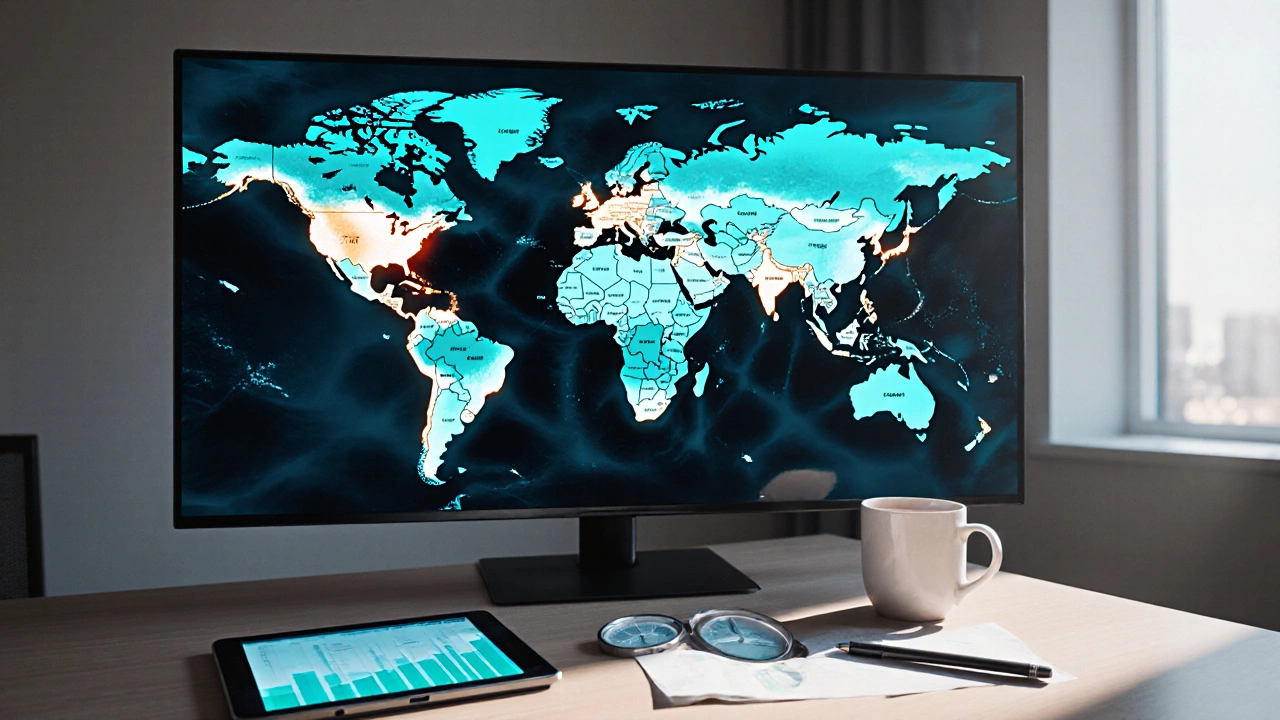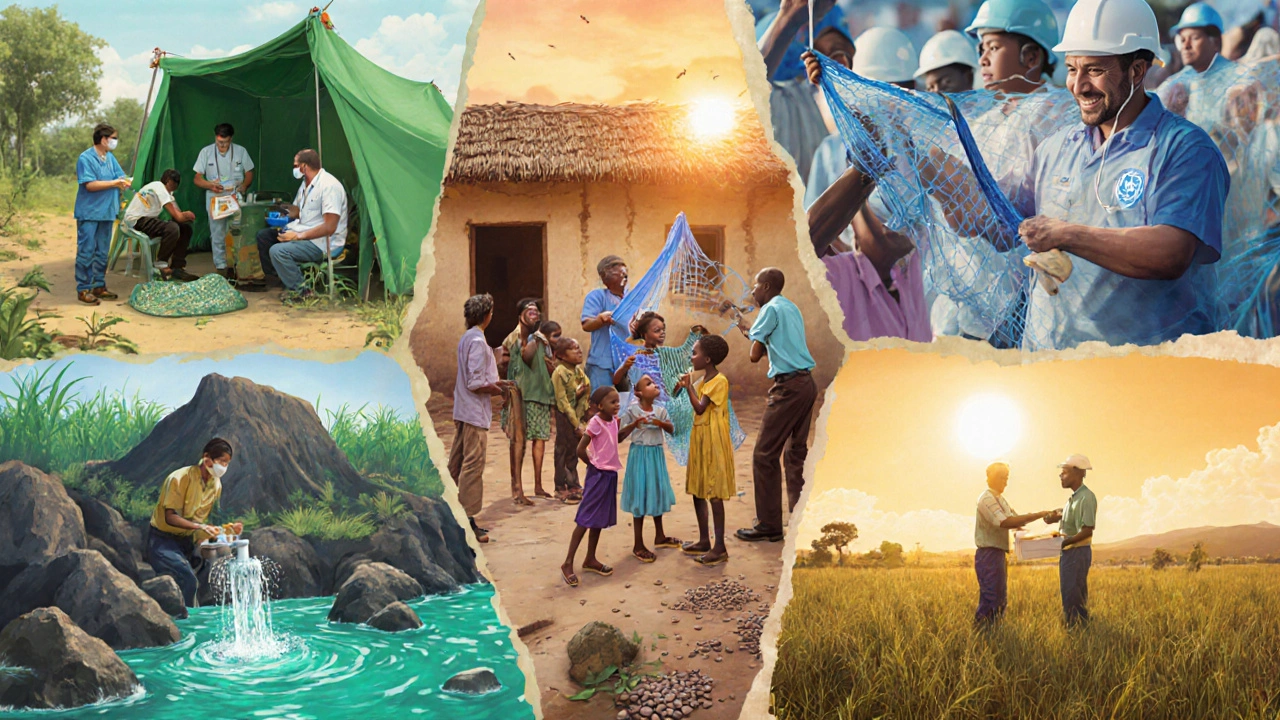World's Best Charity 2025: Top Global Nonprofits Ranked
 Oct, 9 2025
Oct, 9 2025
Charity Impact Selector
Select your priority area to find the top-rated charity for that cause.
Recommended Charity
When you hear the phrase best charity, you probably picture a nonprofit that saves lives, spends every dollar wisely, and has a worldwide impact. But how do you separate hype from hard data? This guide breaks down the exact metrics experts use, lists the charities that dominate each metric in 2025, and shows you how to put your support where it counts most.
How Experts Decide What Makes a Charity "Best"
Charity Navigator is a US‑based watchdog that rates nonprofits on financial health, accountability, and transparency. Its rating system assigns a score from 0 to 100 and a three‑star tier. The organization looks at expense ratios, fundraising efficiency, and board independence. GiveWell takes a different route. It digs deep into evidence‑based outcomes, calculating the cost per life saved or disease averted. The result is a list of "high‑impact" charities that can prove measurable change. Effective Altruism community members aggregate data from both sources, add a long‑term impact lens, and then rank charities based on a composite score.
Three core attributes appear in every ranking:
- Financial efficiency: What share of donations reaches the program side?
- Outcome measurement: Can the charity quantify its results?
- Global reach: Does the organization operate in multiple countries or focus on a narrow region?
When a nonprofit scores high on all three, it’s a strong candidate for the title of the world’s best charity.
Top Ranked Charities in 2025
Below is a snapshot of the five NGOs that consistently rank at the top across the major evaluators.
| Charity | Primary Focus | Charity Navigator Score | GiveWell Rating | Annual Impact (2024) |
|---|---|---|---|---|
| Doctors Without Borders (Médecins Sans Frontières) | Emergency medical aid | 92 / 100 (4‑star) | Highly effective (cost per life saved ≈ $3,300) | 1.2million patients treated in 2024 |
| UNICEF | Child health & education | 89 / 100 (4‑star) | Not directly evaluated, but high effectiveness in vaccination campaigns | Vaccinated 150million children in 2024 |
| The Against Malaria Foundation | Mosquito net distribution | 94 / 100 (4‑star) | Top‑ranked (cost per life saved ≈ $2,500) | 14million nets delivered in 2024 |
| charity: water | Clean water projects | 90 / 100 (4‑star) | Highly effective (cost per person with clean water ≈ $15) | 2million people provided clean water in 2024 |
| Oxfam International | Poverty alleviation & disaster response | 88 / 100 (4‑star) | Moderate (focus on structural change) | Assisted 10million people across 90 countries in 2024 |
All five charities meet the three‑core‑attribute test, but each shines in a different niche. Your choice depends on which impact area resonates most with you.

Deep Dive: Why These Five Stand Out
Doctors Without Borders operates in conflict zones where few other NGOs can work. Its 95% program‑expense ratio means almost every donated dollar goes straight to field hospitals, mobile clinics, and vaccination drives. In 2024, the organization saved an estimated 18,000 lives in war‑torn regions of Ukraine and Sudan.
UNICEF leverages a partnership network that includes governments, the private sector, and local NGOs. Its “Vaccinate the World” campaign cut childhood measles deaths by 30% worldwide last year, proving its massive scaling power.
The Against Malaria Foundation focuses exclusively on distributing long‑lasting insecticidal nets. By tracking each net’s serial number, the charity can verify that every net reaches a household, delivering a transparent impact metric that donors love.
charity: water funds clean‑water projects that are 100% funded by donors-no overhead is ever taken from a specific donation. Their “water‑by‑water” reporting shows GPS‑tagged photos of each completed well, giving donors a visual proof of impact.
Oxfam International tackles systemic poverty by supporting small‑scale farmers, advocating policy change, and delivering emergency relief. Though its cost‑per‑outcome numbers are higher than a net‑distribution charity, its long‑term influence on food security is unrivaled.
How to Choose the Right Charity for Your Wallet
Everyone’s donation strategy looks different. Here’s a quick decision tree you can follow:
- Do you care most about direct, measurable lives saved? → Consider Against Malaria Foundation or Doctors Without Borders.
- Do you want to support children’s education and health on a global scale? → Choose UNICEF.
- Is clean water your passion? → charity: water offers transparent project tracking.
- Do you prefer tackling systemic poverty and climate‑linked inequities? → Oxfam International aligns with that mission.
Whatever you pick, set a recurring donation if you can. Studies from the Giving Science Institute show donors who give monthly are 60% more likely to stay engaged over three years.

Common Pitfalls to Avoid When Picking a Charity
It’s easy to get swayed by flashy marketing or celebrity endorsements. Here are three traps that waste money:
- High overhead claims - A 20% admin cost isn’t automatically bad if the organization spends those dollars on rigorous impact research.
- “One‑off” impact stories - Look for charities that publish long‑term outcome data, not just a single success anecdote.
- Unverified “cash‑in‑hand” numbers - Trust sources like Charity Navigator, GiveWell, or the Effective Altruism community that audit financial statements.
Checking a charity’s annual report, independently audited financials, and third‑party ratings can save you from supporting a vanity project.
Quick Takeaways
- Financial efficiency, measurable outcomes, and global reach are the three pillars of a top‑ranking charity.
- Doctors Without Borders, UNICEF, Against Malaria Foundation, charity: water, and Oxfam International dominate 2025 rankings.
- Match your values to a charity’s primary focus for a more satisfying giving experience.
- Recurring donations boost impact and donor retention.
- Avoid charities that lack third‑party audit or transparent reporting.
Frequently Asked Questions
How does Charity Navigator calculate its scores?
Charity Navigator examines financial health (program vs. administrative costs), accountability (board independence, donor privacy policies), and transparency (publicly available IRS Form990). Each category receives a sub‑score that rolls up into a final 0‑100 rating and a star tier.
Why do GiveWell’s top charities focus on health interventions?
Health interventions such as malaria nets or deworming have a clear, quantifiable effect (e.g., lives saved per dollar). This makes it easier for GiveWell to verify that donations translate directly into measurable outcomes.
Can I donate directly to the charities listed without fees?
Most of the top charities offer a "donate now" page that processes credit‑card payments without a third‑party platform fee. For recurring gifts, using the charity’s own portal typically avoids extra charges.
How often do these rankings change?
Charity Navigator updates its scores annually, GiveWell revises its top list twice a year, and the Effective Altruism community publishes a composite ranking each summer. Shifts usually happen when a charity launches a new program, improves financial transparency, or releases new impact data.
Is it better to give a large one‑time gift or spread it out over months?
Both approaches work, but recurring donations let charities plan longer‑term projects and reduce fundraising overhead. If you can only give once, aim for a charity with low administrative costs to maximize the impact of that single gift.